10 WAYS TO BRING MINIMALISM IN INDIAN HOMES
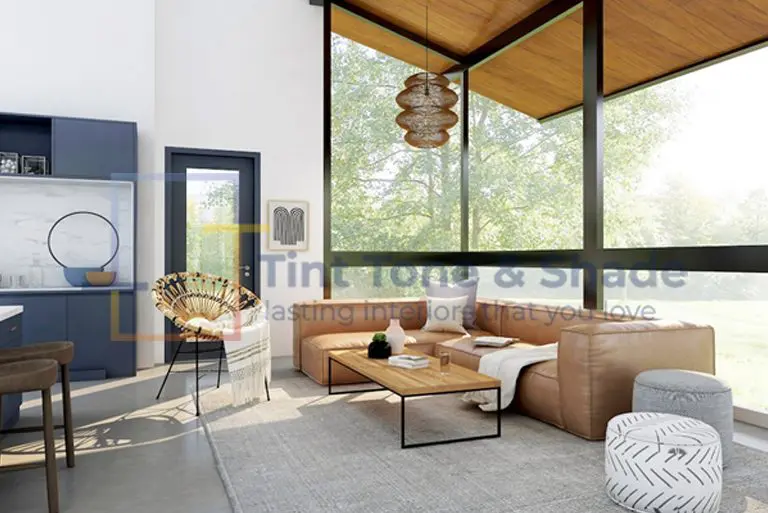
Minimalism is great look at in a western setup. But have you imagined how it will look in an Indian scenario where good craftsmanship is worshipped more than anything? All it takes is a little spin on the choices. Take a look at some smart ways to bring the minimalist ethos with pure desi aesthetics that underline our Indian lifestyle. Minimalism is the mantra of everyone who yearns for a simplistic outlook. Beyond being a no-frills design style loved by almost 9 in 10 people, minimalism opens the door to a way of life. It is the celebration of simplicity in life. But when this simplicity reaches the Indian land where the “Less is bore” wins over “Less is more”, it becomes a challenge. It takes a great aesthetic fusion to overdo the belief that minimalist spaces are cold, sterile and unwelcoming. So, how do we adapt it? Check out our top 10 tricks that will make it work.
1. Go for earth-like neutral color schemes
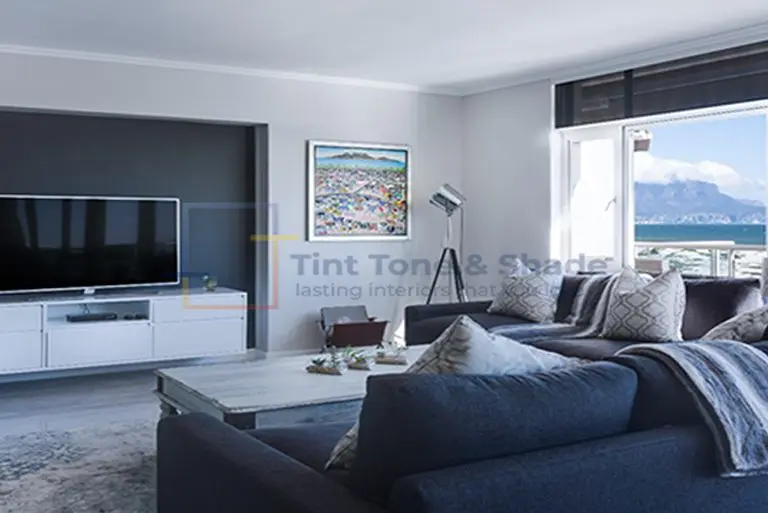
Although we all know that an all-white color theme is the heart of minimalist designs, it is hard to take it up in an Indian context where the intense climate and dust can create maintenance issues. That’s where the neutrals come to the rescue! For any room of your home, choose neutrals like browns, greys and beiges that are easier to maintain. These colors are also popularly used in famous minimalist interiors done by renowned designers since they have a relaxing effect
2. Try Mission Declutter
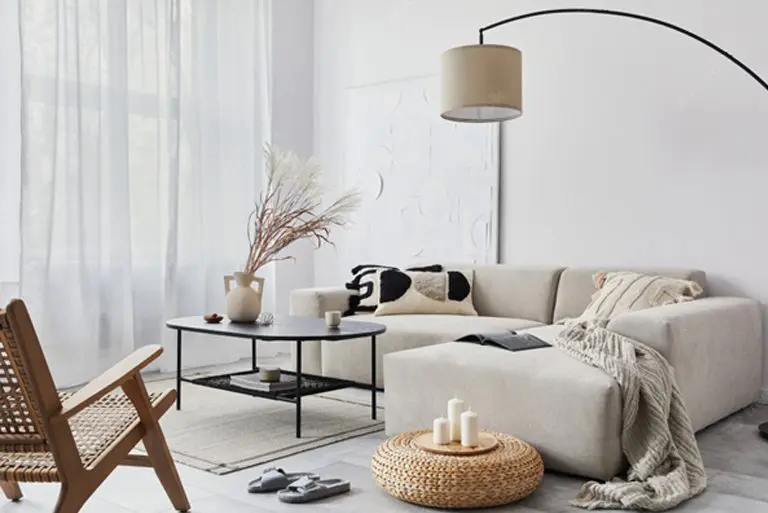
Bring your furniture down to what you’d call your essentials. Leave room for the bare walls & floors and avoid layering as much as possible. Wall-to-wall carpeting is a big no-no! If you’re getting the feeling that your room looks too strict and stringent, get the help of symmetrical arrangements in creating a focal point. Even psychologically, it is believed that people prefer symmetrical compositions since they create visual harmony within the space. A pair of lights or small side tables is enough to complete this look with a good room arrangement.
3. Play with textures

Choose between subtle textures as in contemporary styles and raw natural textures as in rustic style. They are a great way to add definition in a minimalist setting that also brings a sense of familiarity and comfort. Mud or Adobe walls in particular, have the power to convey an authentic Indian look whilst maintaining the simplistic essence of minimalism. On the other hand, seamless clay tiles, wire-cut exposed brick walls etc. are your go-to choices for a contemporary Indian look. Check out Balaji’s home from Tint Tone and Shade to explore how minimalism & texture can be experimented.
4. Give a color pop for focal elements
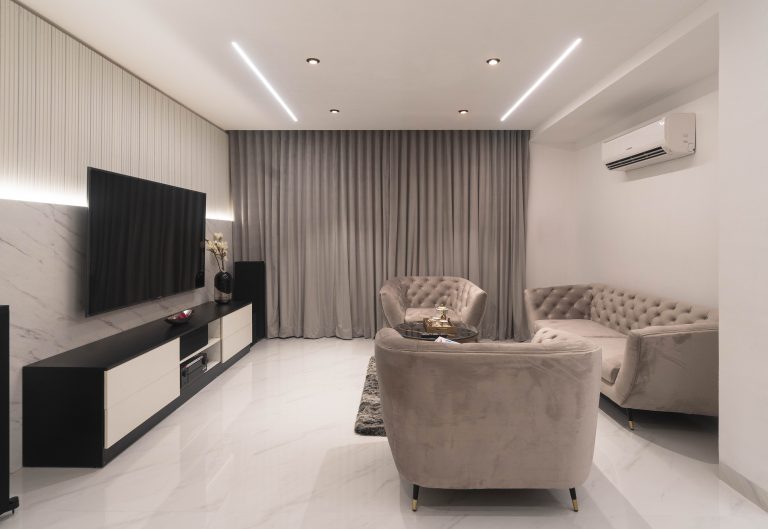
Color and vibrancy forms the core of Indian design. In minimalist settings, the color needn’t be an overdose. It is to be used as an accent. Here’s a minimalist color formula: Pick dark colors or saturated neutrals for your walls and floors and add the bright hues to your soft furnishings. Make a statement with a colorful piece of traditional Indian art & craft, with a centripetal neutral setting. Try the fabrics with an intricate print or hand embroidery.
5. Make it simple
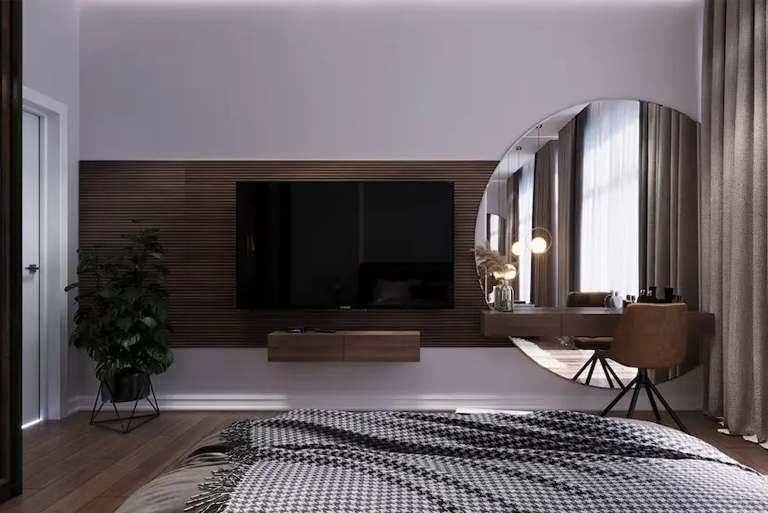
It is a challenge to bring simplicity to Indian-style interiors that are usually complex with a huge hodge-podge of colors. To heighten minimalism, try a two-step method. Step 1: Select one or two low-key colors from your palette for the walls, floor and ceiling. Step 2: Accessorize with a careful selection of one or two statement pieces as décor elements E.g. Mirrors, Paintings, Wall hangings, Decals, Rugs etc. Your simplicity will be sorted this way.
6. Give up on that bulky wooden showcase
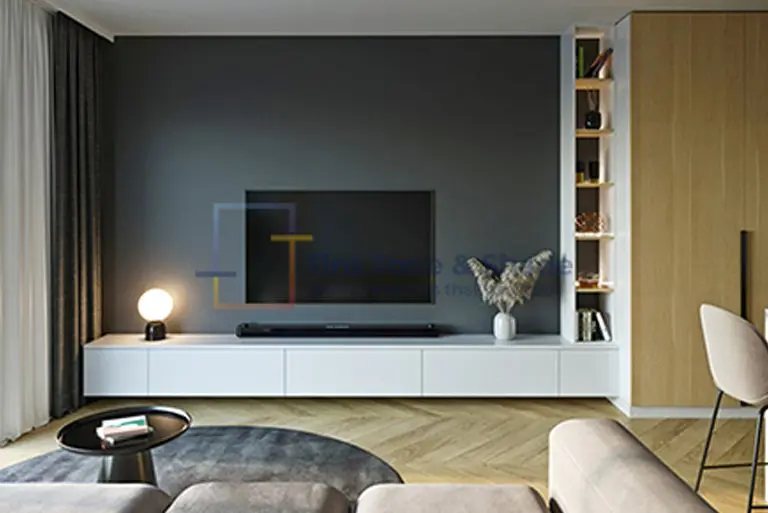
7. Open you heart to the bare walls
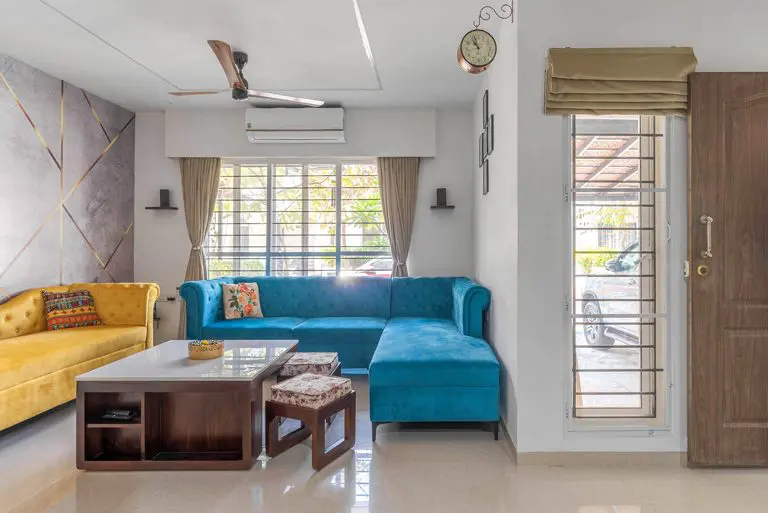
Although perceived as dull, bald and lifeless in an Indian context, bare walls can bring ceaseless serenity with the visual lightness. You can select a single statement piece to become the central element and leave the rest of the walls as simply empty. Try choosing smaller-sized figurines to add character to the space without overwhelming the room. If you’re using multiple pieces, keep them at a fine distance to leave some breathing space.
8. Revamp your wooden furniture

With wooden furniture being the very predecessor of Indian interior design, it is a must-have in almost every home (or at least that’s what grandma says). Living in the minimalism era, we must learn to favour light furniture with clean-cut lines and linear profiles. Instead of going with the traditional karighar-crafted or aasari-made marvels with heavy ornamentation, try going for a mix of plain wood faces with minimal or no decoration. This will promise a sleek look to the overall space.
9. Go for smart storage
10. Don’t go overboard with glass
Glass being the popular material in contemporary minimalist style, can look foreign and alien-like when used extensively in an Indian home. Oversized clear-glass panels for doors and windows can affect the privacy and make way for the scorching heat of Indian summers. That is why it is important to restrict glass to internal use like in the table tops, partitions or the railings of your staircases. This will bring an airy ambience along with preserving the innate quality of Indian homes. Pairing glass with light-toned wooden textures brings a combination of lightness and warmth, which can be a great style addition. There’s more to how any design can adapt for Indian homes. So, make sure you take a wise decision while choosing interior design in India. Read more articles that will help you set up an Indian-contemporary fusion with Interiors: Drop in your queries in the comment section or shoot us a mail.

